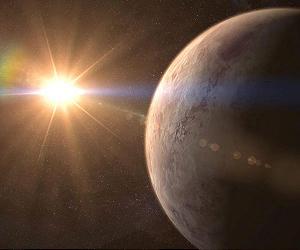The PhD scholar Alejandro Suarez Mascareno of the Instituto de Astrofisica de Canarias and the University of La Laguna has found a new superearth sort planet, called GK 536 b. Together with his dissertation managers at the IAC, Rafael Rebolo and Jonay Isai Gonzalez Hernandez they were able to detect that the total mass of the new superplanet is about 5.4 World masses, in orbit around a nearby really bright star. The study was accepted for publication in Astrophysics and the specialised journal Astronomy, research workers from several states are involved. This exoplanet orbiting the star GJ 536- isn’t inside the superstar habitable area, but its brief orbital period of 8.7 days and the brightness of its superstar, a red dwarf which is rather cool and near to our Sun, make it an appealing candidate for examining its atmospheric environment.
“To date the only planet we’ve discovered is GJ 536 b, but we have been continuing to track the star to see if we may discover other companies”, says Alejandro Suarez Mascareno, who’s the first writer on the article. Rocky planets are often found in groups, he describes, particularly round stars of this kind, and we have been quite confident that we may discover other low mass planets on orbits around the star, with intervals from 100 days up to a couple of years.
We’re preparing a program of observation for passages of this new exoplanet to discover its radius and mean density. This rugged exoplanet is orbiting a star much smaller and cooler than the Sun opinions Jonay Isai Gonzalez, but, glowing and enough nearby. It’s also observable from both the northern and southern hemispheres, so it’s extremely fascinating for the possible detection of other rocky planets in the habitability area of the star.
To detect the planet, we had to measure the velocity of the star with an accuracy of the order of a metre per second. With the construction of the new instrument ESPRESSO, co-directed by the IAC, we will improve this accuracy by a factor of ten, and will be able to extend our search to planets with conditions very similar to Earth, around this and many other nearby stars”.
The planet was discovered in combined efforts between the IAC and the Geneva Observatory.




